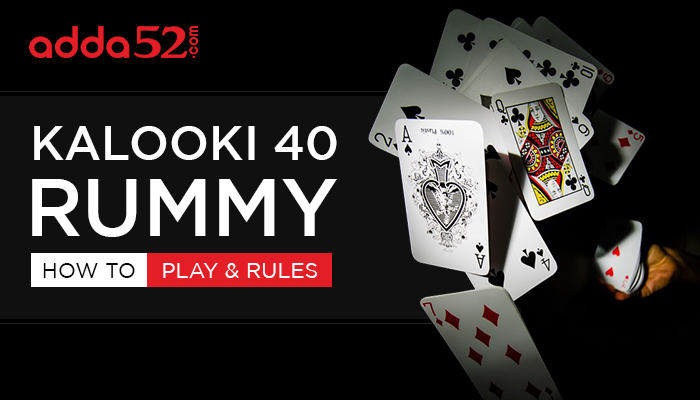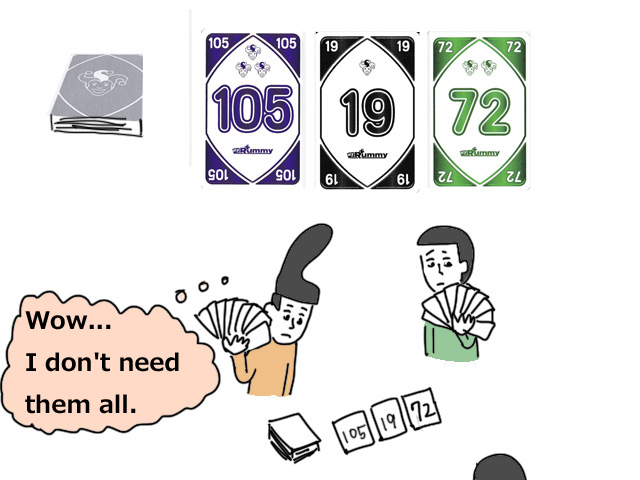
- How Many Cards You Get In Rummy Card Game
- How Many Cards You Get In Gin Rummy
- How Many Cards Do You Get In Rummy
Nov 17, 2020 The objective of Rummy 500 is to lay down sets of 3 of more cards. These can be matched sets of 3-4 cards (such as Queens, 5s, 2s, etc.), and/or sequences of 3 or more cards in the same suit (such as the 4, 5, and 6 of spades). The round is finished when one player uses all of their cards or the stock pile runs out. All points are then tallied. Rummy is a family of card games, but the rules here are for the most basic of the rummy games and a good introduction to the concept for the entire family. It's a popular card game that's fun for all ages. It's perfect for two to six players. All you need to play is a deck of cards. See full list on dummies.com. Both players get ten cards. The dealer turns the rest of the cards into the stock by placing them in the center of the table and turning over the first card. The upcard is offered to the nondealer first. If he doesn’t want the upcard, the dealer may take it, and then play continues.
OBJECTIVE OF RUMMIKUB: Get rid of all the tiles on your rack by organizing them into runs and groups OR have as little points in your hand as possible.
NUMBER OF PLAYERS: 2-4 players
MATERIALS: 106 tiles with numbers and colors including two jokers, tile racks
TYPE OF GAME: Tile Rummy
AUDIENCE: Adult

THE HISTORY OF RUMMIKUB
Rummikub is a group of rummy games played with tiles as opposed to cards. The game was introduced to the Western world by its inventor, Ephraim Hertzano. Tile Rummy was introduced in response to religious and legal sanctions on card games due to their association with gambling. It is believed to have been conceived in the 1930s or 1940s in Romania and has since gained international success, becoming the third best-selling game in the world. Sabra Rummikub is the only variation of Rummikub included in recent versions of the game and is the version described below.
SET UP
Rummikub includes 106 tiles including 2 jokers. The tiles are either black, red, orange, or blue and number 1-13.

The tiles are shuffled, face-down. Each player draws one tile, the player with the highest value tile goes first. Play passes clockwise. Each player collects 13 more tiles for a total of 14. Players place their tiles on the rack so that they are hidden from other players. The tiles that are not selected remain on the table and form a pool.
How Many Cards You Get In Rummy Card Game
COMBINATIONS
The goal of Rummikub is like that of traditional Rummy played with cards- form melds of different combinations in order to get rid of all your tiles or the most high-value tiles (in order to have the lowest value hand) possible. The tiles value is equal to the number printed on it and jokers may be subsitituted for any point value.
Potential combinations consist of:

- How Many Cards You Get In Rummy Card Game
- How Many Cards You Get In Gin Rummy
- How Many Cards Do You Get In Rummy
Nov 17, 2020 The objective of Rummy 500 is to lay down sets of 3 of more cards. These can be matched sets of 3-4 cards (such as Queens, 5s, 2s, etc.), and/or sequences of 3 or more cards in the same suit (such as the 4, 5, and 6 of spades). The round is finished when one player uses all of their cards or the stock pile runs out. All points are then tallied. Rummy is a family of card games, but the rules here are for the most basic of the rummy games and a good introduction to the concept for the entire family. It's a popular card game that's fun for all ages. It's perfect for two to six players. All you need to play is a deck of cards. See full list on dummies.com. Both players get ten cards. The dealer turns the rest of the cards into the stock by placing them in the center of the table and turning over the first card. The upcard is offered to the nondealer first. If he doesn’t want the upcard, the dealer may take it, and then play continues.
OBJECTIVE OF RUMMIKUB: Get rid of all the tiles on your rack by organizing them into runs and groups OR have as little points in your hand as possible.
NUMBER OF PLAYERS: 2-4 players
MATERIALS: 106 tiles with numbers and colors including two jokers, tile racks
TYPE OF GAME: Tile Rummy
AUDIENCE: Adult
THE HISTORY OF RUMMIKUB
Rummikub is a group of rummy games played with tiles as opposed to cards. The game was introduced to the Western world by its inventor, Ephraim Hertzano. Tile Rummy was introduced in response to religious and legal sanctions on card games due to their association with gambling. It is believed to have been conceived in the 1930s or 1940s in Romania and has since gained international success, becoming the third best-selling game in the world. Sabra Rummikub is the only variation of Rummikub included in recent versions of the game and is the version described below.
SET UP
Rummikub includes 106 tiles including 2 jokers. The tiles are either black, red, orange, or blue and number 1-13.
The tiles are shuffled, face-down. Each player draws one tile, the player with the highest value tile goes first. Play passes clockwise. Each player collects 13 more tiles for a total of 14. Players place their tiles on the rack so that they are hidden from other players. The tiles that are not selected remain on the table and form a pool.
How Many Cards You Get In Rummy Card Game
COMBINATIONS
The goal of Rummikub is like that of traditional Rummy played with cards- form melds of different combinations in order to get rid of all your tiles or the most high-value tiles (in order to have the lowest value hand) possible. The tiles value is equal to the number printed on it and jokers may be subsitituted for any point value.
Potential combinations consist of:
Groups are formed with 3 or 4 tiles of the same number but different colors.
Runs are formed with 3 or more numbers in sequence of the same color.
Tiles can only be counted in one combination and are not permitted to exist in multiple groups or runs.
PLAYING THE GAME
A player’s turn consists of either drawing a tile or melding 1 or more tiles from the rack by putting them on the table, face-up.
The first meld must have at least one combination which have a total value of 30 or more points.
After the first meld is finished on a player’s turn they may continue to make new melds or rearrange tiles in existing melds to form new and more strategic combinations.
Due to the complexity and numerous amount of possible rearrangements, there is a time limit imposed on turns: 2 minutes. If the time limit is reached before a player is able to finish rearranging their tiles into valid combinations the tiles must be returned to the configuration when the turn began. Players must also return tiles removed from the rack and draw 3 tiles as a penalty.
If you are unable to meld tiles to your own or any opponents combinations you must draw a tile from the pool. Your turn is over and play passes the next player. On your turn, you must draw tiles until you are able to play. You may not play a tile directly after drawing it.
Combinations with Jokers may have additions but can not have tiles moved and rearranged from it (or with it). Players may, however, replace Jokers with the tile it is supposed to represent if they have it in hand. The Joker does not return to the player’s hand for later use but must be used immediately and re-melded. In groups of equal tiles, the Joker may be represented by any color tile. For example, in a group of #3 red, #3 black, and a joker, the joker may be substituted with either #3 orange or #3 blue.
END GAME
The first player to play all their tiles wins the game. All other players sum the total of their remaining tiles on their rack – jokers count for 30 points. Losers score minus the total value of their tiles and winners score plus the total value of the loser’s tiles.
If the pool of tiles runs dry before anyone plays all their tiles and no one has won the gameplay ends once players are unable or unwilling to play their remaining tiles. The player with the lowest tile total is the winner. The difference between the winner’s total score and a losers is subtracted from the loser’s score. The difference is added to the winner’s score for each loser.
VARIATIONS
- Play can move clockwise or counter-clockwise.
- In a meld with a joker present some play that tiles of both colors must be added to the group before the Joker is retrieved.
- While there is no rule saying a combination can not have two jokers it is a poor and uncommon use of them. If you choose to use two jokers in a single combination they must be explicitly declared which tiles they represent.
- Jokers may value 25 points when they are left on the rack during scoring
REFERENCES: She's a rich girl lyrics.
http://www.rummy-games.com/rules/rummikub.html
How Many Cards You Get In Gin Rummy
https://www.pagat.com/rummy/rummikub.html
How Many Cards Do You Get In Rummy
http://www.thehouseofcards.com/games/rummikub.html

